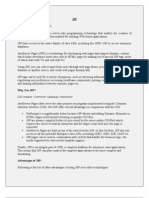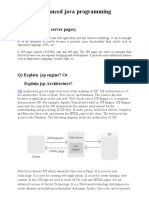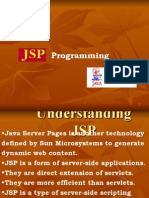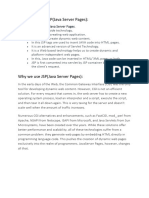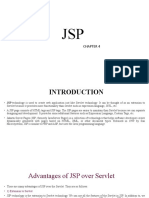0% found this document useful (0 votes)
12 views4 pagesJSP Notes1
The document provides an overview of JavaServer Pages (JSP), highlighting its role in creating web applications by separating presentation and business logic. It contrasts JSP with Servlets, noting that JSP is more suited for web designers while Servlets are for Java developers. Additionally, it outlines the JSP lifecycle, architecture models, and the translation of JSP into Servlets.
Uploaded by
Riya YohannanCopyright
© © All Rights Reserved
We take content rights seriously. If you suspect this is your content, claim it here.
Available Formats
Download as PDF, TXT or read online on Scribd
0% found this document useful (0 votes)
12 views4 pagesJSP Notes1
The document provides an overview of JavaServer Pages (JSP), highlighting its role in creating web applications by separating presentation and business logic. It contrasts JSP with Servlets, noting that JSP is more suited for web designers while Servlets are for Java developers. Additionally, it outlines the JSP lifecycle, architecture models, and the translation of JSP into Servlets.
Uploaded by
Riya YohannanCopyright
© © All Rights Reserved
We take content rights seriously. If you suspect this is your content, claim it here.
Available Formats
Download as PDF, TXT or read online on Scribd
/ 4



















